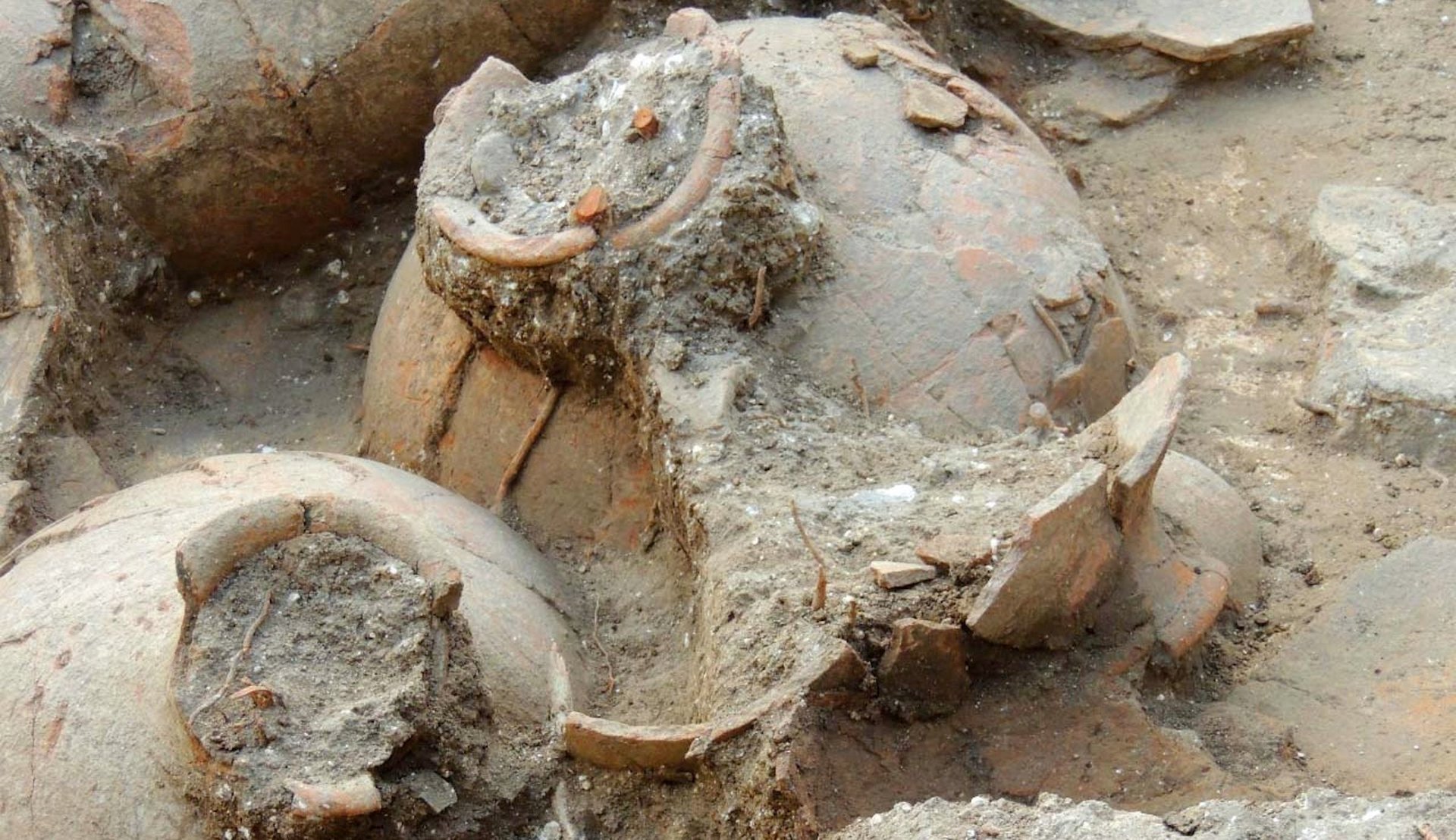This 3,700 year-old wine cellar works just like today’s private wine cellars
Archaeologists have discovered one of the oldest wine cellars in the world, constructed within a palace in Israel, over 3,700 years ago. Even more surprising than its age might be that it actually has a lot in common with modern wine cellars.


Archaeologists have discovered one of the oldest wine cellars in the world, constructed within a palace in Israel, over 3,700 years ago. Even more surprising than its age might be that it actually has a lot in common with modern wine cellars.
The ancient Canaanite wine cellar, in the ruins of Tel Kabri, measures 300 sq. ft.(28 sq. m) and stored 40 oversized 13-gallon (50L) pottery jars for a total capacity of nearly 530 gallons. That’s the equivalent of 3,000 contemporary wine bottles—a princely wine collection even by today’s standards.
Professor Andrew Koh, an archaeological scientist on the dig, told Quartz that the wine cellar was used for feasts of around 50 guests held by the wealthy local ruler, who lived in the 12-person palace. Notably, a primary purpose of the feasts was not just celebrating, but also “networking,” says Koh.
Indeed, today’s top-of-the-line wine cellars—stone walls and clay pots aside—have more than a little in common with the ancient wine cellars:
Size: The massive capacity of the Tel Kabri cellar wouldn’t be out of place amongst the largest private collections of today. The long-dead Canaanite ruler would have rivaled Chesapeake Energy billionaire Aubrey McClendon, owner of 2,000 bottles, one of the world’s largest private collections.
Specialized staff: Back in the Bronze Age, there were servants who were responsible for fermenting, spicing and storing the wines. Others responsible were in charge of watering, decanting, and serving the wine, like sommeliers. Today, to keep tabs on an enormous collection and handle special event wine service today requires wine butlers, sommeliers, wine merchants, and even wine consultants.
Temperature: Then as now, temperature control is key for wine storage; the ideal range is between 45 °F-65 °F (7°C-18°C). The ancients kept their wines cool enough for storage naturally, shaded from the damaging Middle Eastern sun behind walls of plaster and stone. Contemporary wine cellars use modern insulation and refrigeration systems built out of wood, metal, and glass. For the modern oenophile, a new refrigeration system for 3,000 bottles of wine costs $1,200.
Wealthy owners: Amassing a wine collection of that size has always been a marker of true wealth. Tel Kabri was the capital of Canaan at the time, and this palace belonged to one of the most high ranking and most wealthy local rulers. Today, installing a full home wine cellar capable of holding 3,000 bottles could cost between $66,000 and $74,000. That’s serious money that collectors are unlikely to recoup upon reselling their homes. Just one more thing ancient wine cellars have in common with contemporary ones: most people can’t afford them.